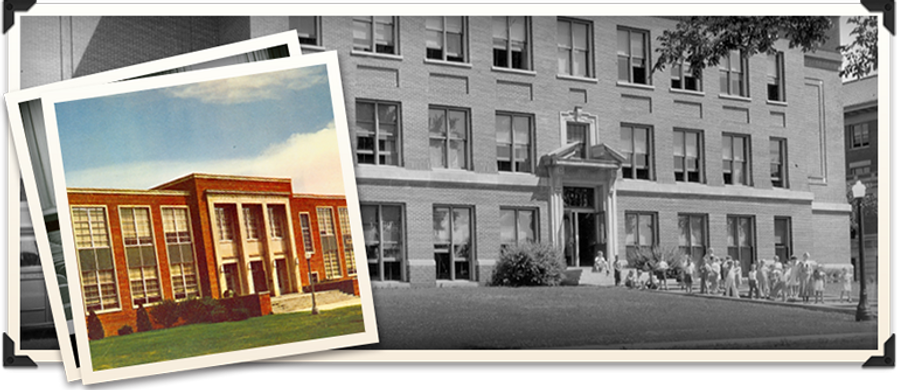

D. LOUIS FINSAND

D. LOUIS FINSAND (1964)
In 1965, D. Louis Finsand came on board as a junior high science teacher and, later, was the coordinator of elementary science. Like Gohman, Finsand was creative and inventive.
According to his later colleague, Dr. James Kelly: “Little could be suggested about the components of earth science that Finsand could not model and demonstrate. His was a mind in constant motion.” Finsand’s materials for earth science teaching rivaled the big publishing houses and his attention to articulation of science curricula through the elementary school years became a model for many schools in the state and nation.
Many of Finsand’s science materials, like Gohman’s, were project based: the students would work through his packets of materials at a pace conducive to their respective talents. Rock polishing devices, stream tables, astrolabes, night-sky domes, and other items were created with his SCOPES (Science Concept Oriented Process Evolved Sequence) program. His teaching was hands-on and his approach to learning was built within the framework of the student’s mind, ability, and interest.
One of Finsand’s most popular classroom activities involved construction of an inexpensive planetarium. In 1979, the journal Science and Children published this letter to Finsand from a grateful Connecticut teacher:
“Recently I received a copy of your splendid instructions for constructing a planetarium . . . Work is almost complete on our 4-meter model. We will be using our planetarium to present astronomy programs to our area school children. I plan to use your charts as a sort of connect-the-dots game to familiarize the students with the basic forms of constellations.”
In 1988, Finsand published Solar System: [A] Teacher’s Guide, and in 1989 Harvard University invited Finsand to help it spread information on astronomy education throughout the United States. In 1991, he co-authored North Polar Constellations: [A] Learning Cycle Teacher’s Guide with Reproducible Masters.
Finsand regularly shared his models with the elementary and junior high school teachers of Iowa through summer workshops on “Rocks & Minerals” and at science conferences. His workshops on metrics (preserved in his 1975 book Metric Measures) differed from standard workshops on the subject which taught conversion from U.S. measurement standards to metrics. Instead, Finsand taught both teachers and students to “think metric.” He used low cost materials for his projects, such as nails, shoe boxes, coat hangers, and baby food jars. Those taking the tuition- free workshop for 2 hours of university credit were told not to go out and buy items for the class, but to look in their closets and drawers or ask neighbors for items. The Red Cross also got involved by donating medicine droppers for workshop participants to use to measure liquids. Participants would construct an equal arm balance (used to measure masses), and they used rocks as weights. A group from Keokuk (Iowa) Senior High School praised the program to the U.S. Office of Education, stating that the workshop was appealing because “it is definitely a hands-on course which lends itself to a very real feeling for metrics” as a pure language in itself. In 1979, Iowa received the largest grant for metric education from the U.S. Office of Education of all fifty states.
Finsand also became involved in Bio-Med, a national program to spur young people’s interest in medicine. Finsand’s program at the Lab School was the only one in the nation at a university without a medical school. Finsand’s Lab School colleague James Kelly served as curriculum director for the project which produced physicians, dentists, nurses and other medical personnel who might not have been able to reach their goals without the program. As part of the federally-funded program, Finsand and Kelly helped establish two magnet schools with the Harlingen, Texas school system for high achieving students wishing medical careers.
Finsand followed the Lab School’s long tradition of collaboration. Beginning in 1975, with colleague Joan Duea and Stanford University’s J. Myron Atkin, he co- authored the Ginn Science Program: Science Log Book and then the Ginn Science Program: Intermediate Level A volume (again with Duea but also Isaac Asimov and Roy A. Gallant). He created science activity books for fifth and sixth graders.
“Finsand’s curricular innovations created a real sense of wonderment in children,” Kelly recalls. “He created in his students not only a fondness for earth science and astronomy, but also confidence and eagerness to experiment.”
Finsand and Potter mentored another nationally known science leader, Robert Yager, in his undergraduate teaching practicums. Yager went on to become Professor of Science Education at the University Iowa and developed one of the largest graduate programs in science education in the United States. Yager also headed seven national organizations, including the National Association for Research in Science Teaching and the National Science Teachers Association. He has authored more than 600 research reports, chapters, and books and established at UNI the Yager Education Fund for Excellence which gives grants to UNI science education graduates in at least their fifth year of teaching.

